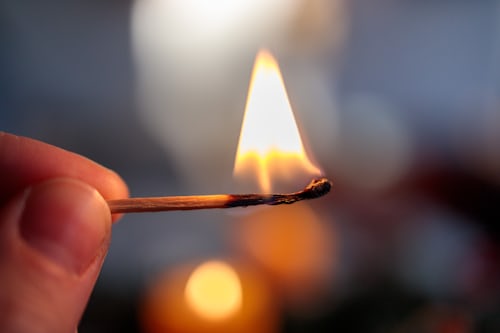Home Essentials For Fire Ignition: 3 Household Items to Start Your Fire
Some skills may not seem crucial until they are the only way to survive a complicated ordeal. Such is the case with learning how to start a fire. Most people don’t think about starting a fire because they have the necessary aids to get this done. But what happens when you have no lighter or matchstick to help? This is where basic fire lighting skills come in.
Whether camping or stuck at home with no lighting source, quick thinking may be the only ticket to your next meal or source of warmth. Fortunately, there are several ways to ignite a fire at home. You need simple, easy-to-find household items, and you will be good to go. Below are a few suggestions you ought to consider.
Duct Tape and Hand drill
If you have been wondering how to make a fire without a lighter, then a few suggestions will surprise you. The duct tape will help sustain the fire once you light it with the handrail technique. Note that hand drill fire lighting is one of the oldest fire-making styles.
Start by gathering your firewood and, in this case, have some duct tape to keep the fire going. Next, get the hand drill and have the determination. Finally, it would help if you were determined not to give up since this process involves a lot of hand-mechanical effort.
Your first step is to create a Tinder nest. This is what transforms the ember into a much-needed flame. Fortunately, the nest can be created from anything if it can catch fire. Leaves, dry grass, duct tape and dried tree bark are great examples.
Next, create a notch in the fire board. Follow this up by having a tiny depression next to it. Put your chosen tinder nest strategically to catch any ember released from the friction between the fireboard and spindle. Once everything is set, you can start spinning the spindle into the fireboard’s depression. Make sure to use a spindle no less than 2 feet long.
Also, maintain the same pressure as you roll the spindle between your hands. Doing this continuously will eventually lead to the formation of an ember which can then be used to start a fire. Immediately you spot an ember, tap on the fireboard so that the ember can drop on the bark and the tinder nest. You can then blow the tinder nest to ignite the fire further. Lighting the duct tape to sustain the fire can prolong its span.
Use a Bow & Drill
This is also another trick of lighting a fire based on friction. It is also one of the easiest ways to maintain, hence considered an effective technique. Users have an easier time maintaining pressure and speed, which helps with sufficient creation of friction, which helps with starting the fire. It would be best to have a fireboard, spindle, and bow & socket.
Note that the socket helps create pressure on the spindle’s other end each time you rotate the bow. Moreover, you can use a stone or a different wood piece to act as a socket. However, if you use a wood piece, choose a harder piece than the one you use as a spindle. Preferably go for wood with oil and sap, as this provides lubrication between the socket and spindle.
For the bow, measure your arm’s length when creating one. Opt for flexible wood pieces that can curve slightly. Don’t worry about the strong’s material; this can be anything, including rawhide, shoelace, strip, or rope. All you need to do is ensure it is not easily breakable. Work with what is easily available to you.
The next step will be creating the fireboard. Cut a v-shaped notch into the piece to form a tiny depression. It is under this notch that you place your preferred tinder. Proceed to string up the spindle. Make sure the spindle is looped in the string of the bow. Place one end of the spindle into the fireboard and pressure the socket’s end.
Once everything is set correctly, begin to saw back and forth using the bow. This is a basic mechanical drill. You will observe that as the spindle rotates quickly, it releases an ember. Gently drop the ember into the tinder nest you set underneath and blow on it until you have the desired fire.
Use a Steel and Flint
Most people consider this an ancient standby fire-igniting technique. Even when camping, Flint & Steel is a great backup. You never know if the matches you bring will get wet for one reason or another. The steel and flint are a great way to spark a fire. Moreover, you don’t have to buy the set when you can improvise using a pocketknife and char cloth.
Get your char-cloth and rock, making sure you are holding the rock between the forefingers and thumb. Next, ensure that the edge hangs about 2-3 inches. Also, the char cloth needs to be between the flint and thumb. Proceed to strike the knife blade’s back or the steel striker’s back against the flint a few times. The sparks released should be directed to the char cloth, which then bursts into flames, and you have your fire.
Final Thoughts
Making a fire at home or a camp without matches or a lighter shouldn’t be rocket science. Find practical measures around you. It may be a little more work, but it can save the day. All you need is determination and resolve to make the fire at all costs.





